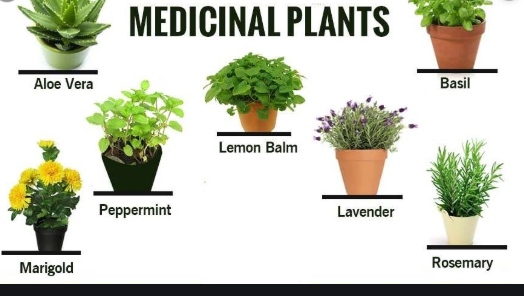Medicinal plants are considered as a rich resource of ingredients which can be used in drug development either pharmacopoeial, non- pharmacopoeial, or synthetic drugs. It is the use of plants for medicinal purposes {herbalism}. These medical effects are found in any part of the plant like fruit, seed, stem, bark, flower, leaf, stigma or root.
Apart from that, these plants play a critical role in the development of human cultures around the whole world.

History of Medicinal Plants
Recently, WHO (World Health Organization) estimated that 80% of people worldwide rely on herbal medicines for some aspect of their primary health care needs. According to WHO, around 21,000 plant species have the potential for being used as medicinal plants.
More than 30% of the entire plant species, at one time or other, were used for medicinal purposes. It has been estimated, that in developed countries such as the United States, plant drugs constitute as much as 25% of the total drugs, while in fast-developing countries such as India and China, the contribution is as much as 80%. Thus, the economic importance of medicinal plants is much more to countries such as India than to rest of the world. Example of one of the best product company in India is Kedi Health Care.
The Invention of The Uses of This Medicinal Plants
The following have led to increased emphasis on the use of plant materials as a source of medicines for a wide variety of human ailments.
- Population rise
- Inadequate supply of drugs
- The prohibitive cost of treatments
- Side effects of several synthetic drugs
- Development of resistance to currently used drugs for infectious diseases
Some Examples of These Medicinal Plants
Basil, Fennel, Chives, Cilantro, Apple Mint, Thyme, Golden Oregano, Variegated Lemon Balm, Rosemary, Variegated Sage, cinnamon, myrrh, aloe, sandalwood, ginseng, red clover, burdock, bayberry, certain antipyretic herbs such as Chirayta, black pepper, sandalwood and safflower, Honey, turmeric, marshmallow, Giloe, Goldenseal, Aloe, Barberry, etc.
Adverse Effects of These Medicinal Plants
Treatment with medicinal plants is considered very safe as there are no or minimal side effects. These remedies are in sync with nature, which is the biggest advantage. The golden fact is that the use of herbal treatments is independent of any age groups and the sexes.
These herbs that have medicinal quality provide rational means for the treatment of many internal diseases, which are otherwise considered difficult to cure
Health Importance of These Medicinal Plants
- Moreover, some plants are considered an important source of nutrition and as a result of that, they are recommended for their therapeutic values. Some of these plants include ginger, green tea, walnuts, aloe, pepper, and turmeric, etc.
- Some plants and their derivatives are considered as an important source for active ingredients which are used in aspirin and toothpaste etc.
- Apart from the medicinal uses, herbs are also used in natural dye, pest control, food, perfume, tea and so on. Different kinds of medicinal plants/ herbs are used to keep ants, flies, mice and flee away from homes and offices.
- Recipes for the treatment of common ailments such as diarrhea, constipation, hypertension, low sperm count, dysentery and weak penile erection, piles, coated tongue, menstrual disorders, bronchial asthma, leucorrhoea, and fevers are given by the traditional medicine practitioners very effectively.
Further Benefits of These Medicinal Plants {Herbs}
- Herbs such as black pepper, cinnamon, myrrh, aloe, sandalwood, ginseng, red clover, burdock, bayberry, and safflower are used to heal wounds, sores, and boils.
- Many herbs are used as blood purifiers to alter or change a long-standing condition by eliminating the metabolic toxins. These are also known as ‘blood cleansers’.
- Some herbs are used to neutralize the acid produced by the stomach. Herbs such as marshmallow root and leaf. They serve as antacids. The healthy gastric acid needed for proper digestion is retained by such herbs.
- Ginger and cloves are used in certain cough syrups. They are known for their expectorant property, which promotes the thinning and ejection of mucus from the Cardamom, Chrysanthemum, Coriander, Fennel, Peppermint and Spearmint, Cinnamon lungs, trachea and bronchi. Eucalyptus, Cardamom, Wild cherry and cloves are also expectorants
- A wide variety of herbs including Giloe, Goldenseal, Aloe, and Barberry are used as tonics. They can also be nutritive and rejuvenate a healthy as well as a diseased individual.
- Herbal medicine practitioners recommend calmative herbs, which provide a soothing effect on the body. They are often used as sedatives.
As herbs are natural products they are free from side effects, they are comparatively safe, eco-friendly, and locally available. These herbal products are safer in contrast to synthetic drugs that are regarded as unsafe to human being and the environment. It’s time to promote them globally.